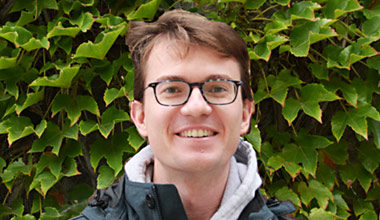
Heterogeneity and Pattern Formation in Bacterial Biofilms
November 21, 2022 – Joseph Larkin
Department of Biology, Department of Physics, Boston University
Even bacterial colonies composed of one species generate great physiological heterogeneity. Cells enter diverse states of growth and gene expression at different points in colony development. For example, biofilms formed by Bacillus subtilis contain both vegetative cells and dormant spores. Through time-lapse imaging of biofilm-forming strains of B. subtilis, we show that variations in genetic circuit timing, which may be small at the cellular level, can lead to qualitatively different patterns of cell phenotypes as colonies grow. With a simple mathematical model of biofilm growth, we can predict patterns that strains with different cell differentiation dynamics will generate as they form biofilms. Our results establish the opportunity to control emergent structure of bacterial colonies by manipulating well-studied gene expression circuits. Control over cellular heterogeneity will allow us to test intriguing hypotheses on the functional role of heterogeneity in bacterial biofilms, such as division of labor and bet-hedging.
For folks attending from outside of MIT: You must adhere to MIT’s policies for campus access and visitors. While attending the seminar, you will be hosted by an organizer. Building 68 is on key card acess. An organizer will be at the Hockfield Court entrance to building 68 to escort you to room 180. Doors close 5 minutes prior to the talk.